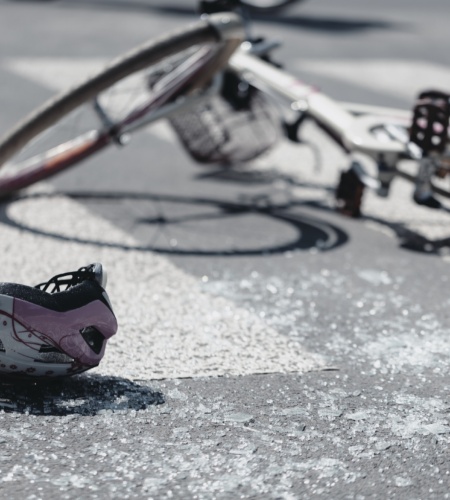The Most Common Brain Injuries from a Bicycle Accident Treatment and Legal Assistance in Nevada
Bicycle accidents can result in severe head injuries that can have long-lasting effects on an individual’s health and well-being.
Traumatic brain injuries (TBIs) are one of the most common types of head injuries caused by bicycle accidents. TBIs are caused by a sudden impact to the head, which can result in damage to the brain.
Symptoms of TBIs can range from mild to severe, and can include nausea, dizziness, memory loss, and loss of consciousness.
During a bicycle accident, the head can be subjected to a sudden and forceful impact. This can cause the brain to move inside the skull, resulting in a TBI.
The severity of the injury depends on the force of the impact and the location of the injury.
In some cases, the injury may be mild and may not require medical attention. However, in severe cases, the injury can lead to permanent brain damage or even death.
Preventing head injuries in a bicycle accident is crucial.
Wearing a helmet is one of the most effective ways to reduce the risk of a TBI. A helmet can absorb the impact of a collision and protect the head from injury.
It is also important to follow traffic rules and ride defensively to avoid collisions with other vehicles or pedestrians.
If you or a loved one has suffered a head injury in a bicycle accident, it is important to seek medical attention immediately.
A personal injury lawyer can also help you understand your legal rights and options for pursuing compensation for your injuries.
Mechanisms of Brain Injury During Bicycle Accidents
Bicycle accidents can cause a variety of head and brain injuries, ranging from mild concussions to severe traumatic brain injuries (TBI).
Understanding the mechanisms of brain injury during bicycle accidents can help you take steps to prevent them.
The most common mechanism of brain injury during a bicycle accident is impact. When a cyclist falls or collides with an object, their head may hit the ground, a vehicle, or another object.
This impact can cause the brain to move inside the skull, resulting in bruising, bleeding, or swelling.
Another mechanism of brain injury during a bicycle accident is rotational force. When a cyclist’s head is struck at an angle, the brain may rotate inside the skull, causing shearing or tearing of the brain tissue.
This type of injury is often seen in high-speed crashes or collisions with motor vehicles.
In addition to impact and rotational force, rapid acceleration and deceleration can also cause brain injury during a bicycle accident.
When a cyclist is thrown from their bike, their head may experience rapid acceleration and deceleration, which can cause the brain to bounce around inside the skull, resulting in injury.
To prevent brain injury during a bicycle accident, it is essential to wear a properly fitting helmet.
A helmet can absorb the impact of a collision and reduce the risk of brain injury.
Cyclists should also practice safe riding habits, such as obeying traffic laws, using hand signals, and staying alert to their surroundings.
If you experience a head injury during a bicycle accident, seek medical attention immediately.
Treatment for brain and head injuries may include rest, medication, surgery, or rehabilitation.
Types of Brain and Head Injuries from Bicycle Accidents
If you are involved in a bicycle accident, your head and brain are at risk of injury due to the impact. Here are some of the most common types of brain and head injuries that can occur from a bicycle accident:
Concussions
A concussion is a type of traumatic brain injury (TBI) that occurs when the brain is shaken inside the skull.
This can happen due to a sudden blow or impact, such as hitting your head on the ground during a bicycle accident.
Symptoms of a concussion may include headache, dizziness, confusion, and memory loss.
Contusions
A contusion is a bruise on the brain that can occur when the brain hits the inside of the skull during a bicycle accident.
Symptoms of a contusion may include headache, nausea, vomiting, and loss of consciousness.
Skull Fractures
A skull fracture is a break in one of the bones of the skull. This can occur during a bicycle accident when the head hits a hard surface, such as the ground or a car.
Symptoms of a skull fracture may include headache, swelling, and bleeding from the ears or nose.
Intracranial Hemorrhages
An intracranial hemorrhage is bleeding inside the skull that can occur during a bicycle accident.
This can happen due to a blow to the head or a sudden stop that causes the brain to move inside the skull.
Symptoms of an intracranial hemorrhage may include headache, confusion, and loss of consciousness.
Diffuse Axonal Injury
A diffuse axonal injury (DAI) is a type of brain injury that can occur during a bicycle accident when the brain is shaken inside the skull.
This can cause damage to the brain’s axons, which are responsible for transmitting information between brain cells.
Symptoms of a DAI may include coma, seizures, and loss of consciousness.
To prevent head injuries in a bicycle crash, it is important to wear a helmet and follow the rules of the road.
If you do suffer a head injury in a bicycle accident, seek medical attention immediately.
Treatment for brain and head injuries from a bicycle accident may include medication, surgery, and rehabilitation.
Treatment Options for Brain and Head Injuries
If you have suffered a brain or head injury from a bicycle accident, it is essential to seek immediate medical attention.
The treatment options for brain and head injuries depend on the severity of the injury. In this section, we will discuss the different treatment options available for brain and head injuries.
Immediate Medical Response
If you have suffered a head or brain injury from a bicycle accident, the first step is to seek immediate medical attention.
The medical response team will assess the severity of the injury and provide emergency treatment.
The emergency treatment may include stabilizing the head and neck, controlling bleeding, and ensuring that the airway is clear.
Rehabilitation and Therapy
After the immediate medical response, the next step is rehabilitation and therapy.
Rehabilitation and therapy are essential for a full recovery from a brain or head injury.
The rehabilitation process may include physical therapy, occupational therapy, and speech therapy.
These therapies can help you regain your strength, coordination, and speech.
Surgical Interventions
In some cases, surgical interventions may be necessary for brain and head injuries.
The surgical interventions may include removing blood clots, repairing skull fractures, and relieving pressure on the brain.
The type of surgical intervention depends on the severity of the injury.
It is important to note that the treatment options for brain and head injuries can be expensive.
If you have suffered a brain or head injury from a bicycle accident, you may be eligible for compensation.
A personal injury lawyer can help you get the compensation you deserve for your injuries.
Legal Support for Bicycle Accident Victims in Nevada
If you have experienced a head or brain injury due to a bicycle accident in Nevada, it is important to seek immediate medical attention.
After seeking medical attention, it is recommended to contact a personal injury lawyer to explore your legal options.
A personal injury lawyer can help you understand your rights and the legal process for obtaining compensation for your injuries.
Role of a Personal Injury Lawyer
A personal injury lawyer can help you navigate the legal system and advocate for your rights.
They can investigate the circumstances of your accident, gather evidence, and negotiate with insurance companies on your behalf.
Additionally, they can help you understand the compensation you may be entitled to, such as medical expenses, lost wages, and pain and suffering.
Compensation and Claims Process
The compensation and claims process can be complex and overwhelming for victims of bicycle accidents.
A personal injury lawyer can help you understand the process and ensure that you receive fair compensation for your injuries.
They can also help you file a claim with the appropriate insurance company and negotiate a settlement that covers your expenses and losses.
Legal Strategy for Brain Injury Cases
Brain injuries can be severe and life-altering.
A personal injury lawyer can help you develop a legal strategy that takes into account the long-term effects of your injury. They can work with medical professionals to ensure that you receive the necessary treatment and support to recover from your injury.
Additionally, they can help you build a case that demonstrates the full extent of your injuries and the impact they have had on your life.
Seeking legal support after a bicycle accident can help you obtain the compensation you need to recover from your injuries and move forward with your life.
If you have experienced a head or brain injury due to a bicycle accident in Nevada, it is important to contact a personal injury lawyer as soon as possible to explore your legal options.



